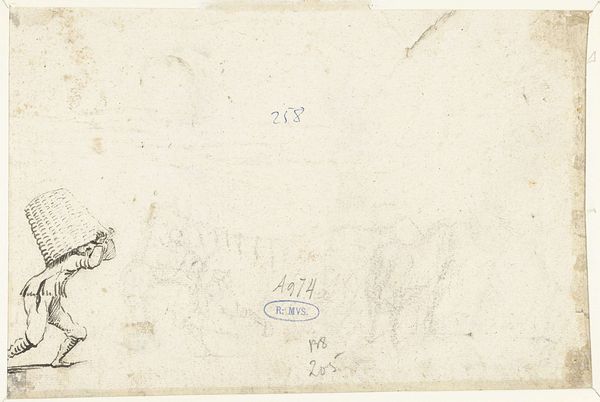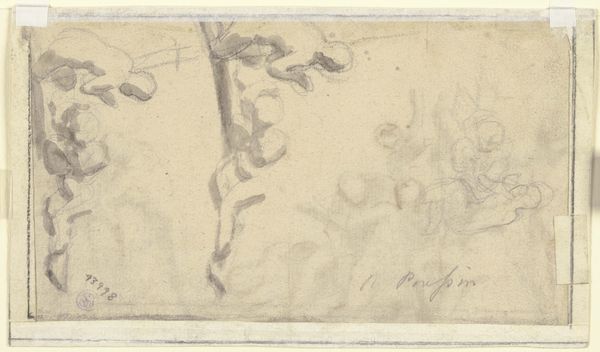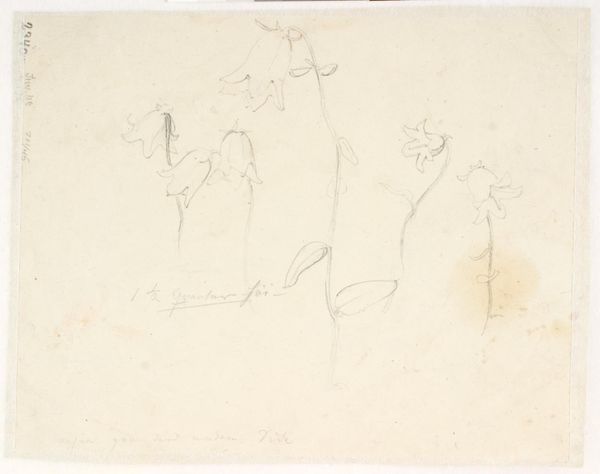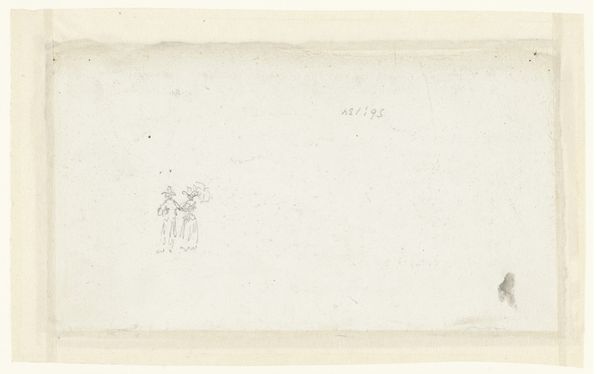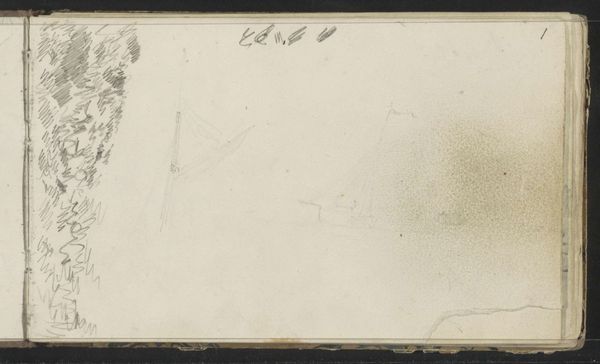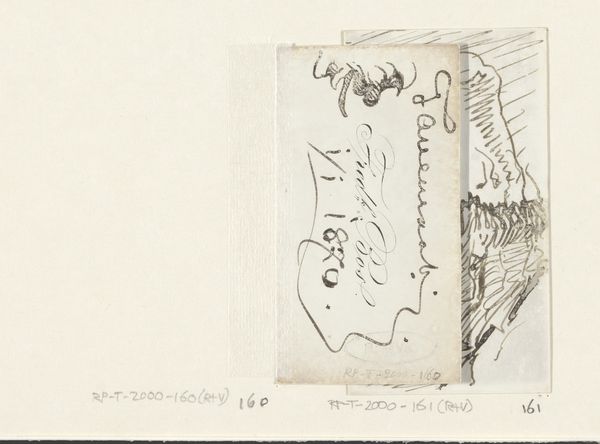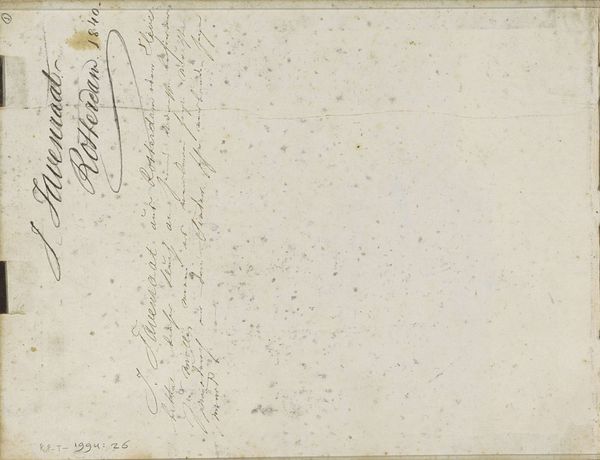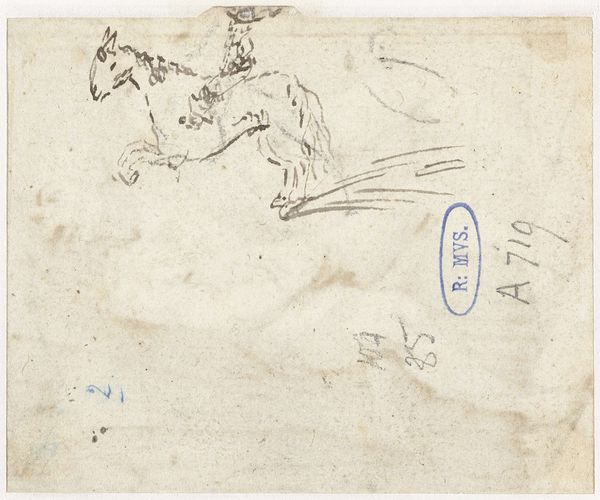
drawing, paper, pencil
#
portrait
#
drawing
#
baroque
#
figuration
#
paper
#
pencil
Dimensions: height 110 mm, width 205 mm
Copyright: Rijks Museum: Open Domain
Editor: Here we have Moses ter Borch's "Figuurschets" from around the 1650s, a modest pencil drawing on paper housed here at the Rijksmuseum. It strikes me as quite a sparse composition; the figure feels almost ghost-like, amidst the emptiness. What do you see in this piece? Curator: Immediately, I'm drawn to the contrast in textures. Note the dense, almost smudged graphite creating the form on the left, a sharp departure from the delicate, linear quality defining the figure on the right. It establishes a compelling visual tension within the work. Editor: I see what you mean about the textures. What about the composition itself? Does the positioning of the forms signify anything to you? Curator: Absolutely. The stark separation between the solid mass and the ephemeral figure creates a dynamic visual relationship. The figure, though faint, occupies the majority of the pictorial space, suggesting perhaps its primacy over the solid mass, which functions more as an anchor. Are those two even supposed to be together, as opposed to being doodles of completely different images? Editor: That's a good question. If we consider them as distinct studies on the same paper, does that change our understanding of the work? Curator: Indeed. If disconnected, we might analyze each element individually, focusing on the tonal gradations of the mass versus the calligraphic elegance of the figure. We would consider them each separately based on their individual forms. But their placement relative to one another remains critical to understanding the complete sheet. Editor: So, even in a sketch, composition still dictates how we perceive the individual elements? Curator: Precisely. The interplay of form, texture, and spatial arrangement creates meaning regardless of the artist's intent. Editor: I never thought about it that way before. It makes me look at sketches in a totally different light now. Curator: The beauty of formalism: looking at how shapes work to deliver the visual language, and how the language may deliver beauty.
Comments
No comments
Be the first to comment and join the conversation on the ultimate creative platform.
